How Often Should You Clean an Oscar Fish Tank? Complete Maintenance Schedule for Healthy Oscars
This post may contain affiliate links.
Oscar fish tank maintenance is one of the most critical aspects of keeping these magnificent South American cichlids healthy and thriving. Due to their large size, messy eating habits, and substantial bio-load production, Oscars require more frequent cleaning than most freshwater fish species. The question “how often should you clean an Oscar fish tank?” doesn’t have a one-size-fits-all answer, but this comprehensive guide will provide you with expert-backed maintenance schedules and techniques.
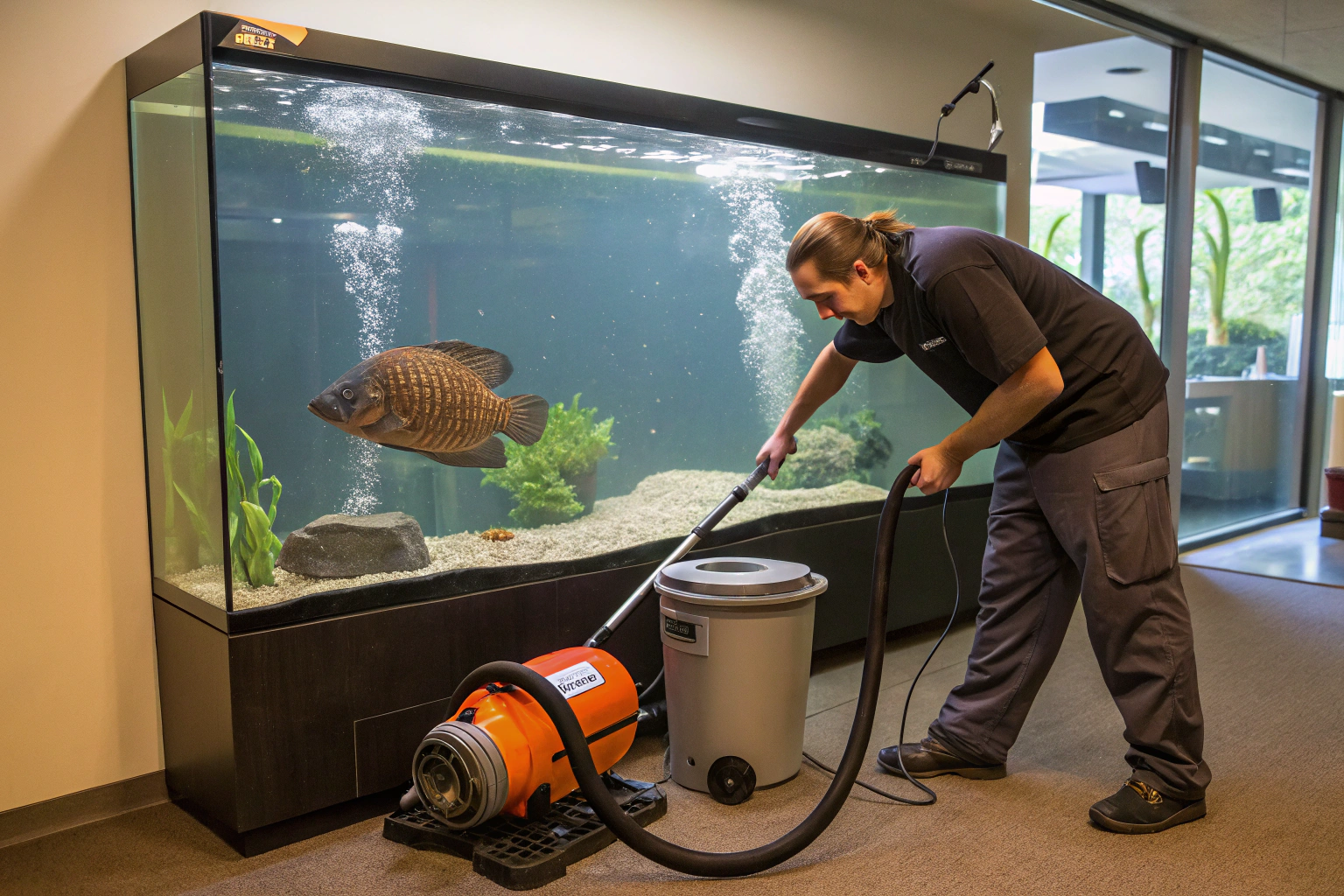
Understanding Oscar Fish Bio-Load and Waste Production
Oscar fish (Astronotus ocellatus) are considered heavy waste producers in the aquarium hobby. Adult Oscars can reach 12-14 inches in length and weigh over 3 pounds, making them one of the largest freshwater aquarium fish. Their substantial size, combined with their voracious appetite, creates significant challenges for aquarium water quality maintenance.
Why Oscars Require Frequent Tank Cleaning
High Waste Production: A single adult Oscar produces approximately 3-5 times more waste than smaller cichlids of similar dietary habits. This waste includes:
- Solid waste (feces)
- Uneaten food particles
- Gill excretions (primarily ammonia)
- Sloughed-off mucus and scales
Messy Eating Habits: Oscars are notorious for their feeding behavior, which includes:
- Spitting out and re-consuming food
- Scattering food particles throughout the tank
- Digging and substrate disruption during feeding
Optimal Oscar Fish Tank Cleaning Schedule
Daily Maintenance (5-10 minutes)
Visual Inspection and Spot Cleaning
- Remove uneaten food within 15-20 minutes after feeding
- Check for dead plant matter or debris
- Monitor water temperature and equipment function
- Observe fish behavior for health indicators
Water Quality Monitoring
- Test ammonia levels if fish show stress signs
- Check filter operation and water flow
- Ensure adequate aeration and surface agitation
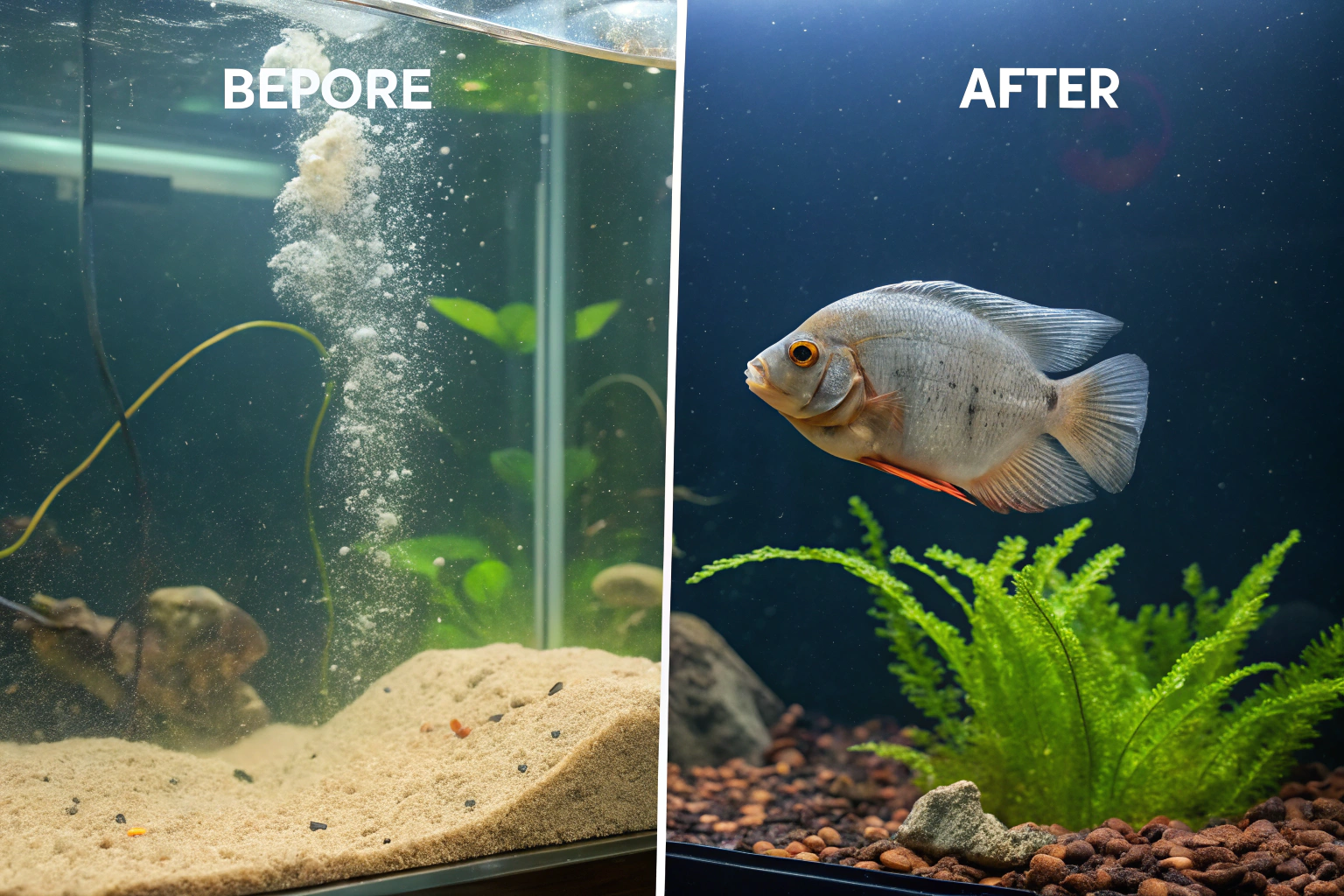
Weekly Maintenance (30-45 minutes)
Partial Water Changes
- Standard tanks (75-125 gallons): 25-30% water change
- Larger tanks (150+ gallons): 20-25% water change
- Heavily stocked tanks: Up to 40% water change
Substrate Maintenance
- Vacuum gravel or sand in feeding areas
- Remove accumulated debris from corners
- Clean around decorations and equipment
Equipment Check
- Rinse mechanical filter media in tank water
- Check heater accuracy with thermometer
- Clean glass surfaces for optimal viewing
Bi-Weekly Tasks (45-60 minutes)
Deep Substrate Cleaning
- Thorough gravel vacuuming of entire tank bottom
- Move decorations to clean underneath
- Remove algae buildup from surfaces
Filter Maintenance
- Replace or clean mechanical filtration media
- Check biological media condition
- Clean filter impeller and housing
Water Parameter Testing Use quality test kits from reputable manufacturers like API or Tetra to monitor:
- Ammonia (should be 0 ppm)
- Nitrite (should be 0 ppm)
- Nitrate (should be below 20 ppm)
- pH levels (6.0-8.0 for Oscars)
Monthly Deep Cleaning (1-2 hours)
Complete System Maintenance
- 40-50% water change with thorough substrate cleaning
- Complete filter system overhaul
- Equipment calibration and testing
- Decoration and artificial plant cleaning
Health Assessment
- Detailed fish health examination
- Weight and growth monitoring
- Behavioral pattern documentation
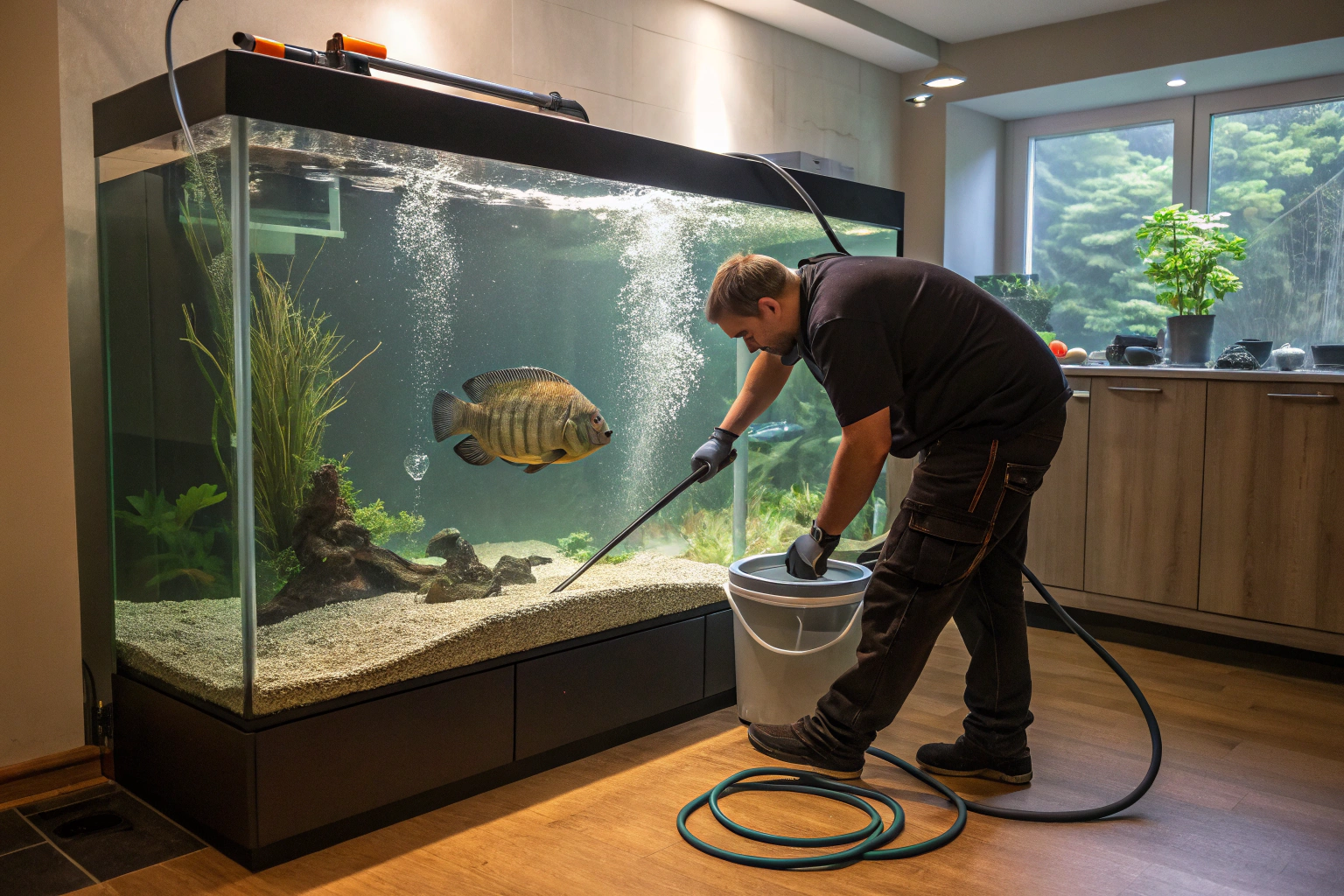
Tank Size Impact on Cleaning Frequency
Small Tanks (75-100 gallons)
Not recommended for adult Oscars, but if unavoidable:
- Daily water changes (10-15%)
- Twice-weekly major cleaning
- Enhanced filtration requirements
- Constant water parameter monitoring
Medium Tanks (125-200 gallons)
Acceptable for single adult Oscar:
- Weekly water changes (25-30%)
- Bi-weekly deep cleaning
- Monthly comprehensive maintenance
- Standard monitoring schedule
Large Tanks (200+ gallons)
Ideal for Oscar keeping:
- Weekly water changes (20-25%)
- Monthly deep cleaning sufficient
- Quarterly major overhauls
- More stable water parameters
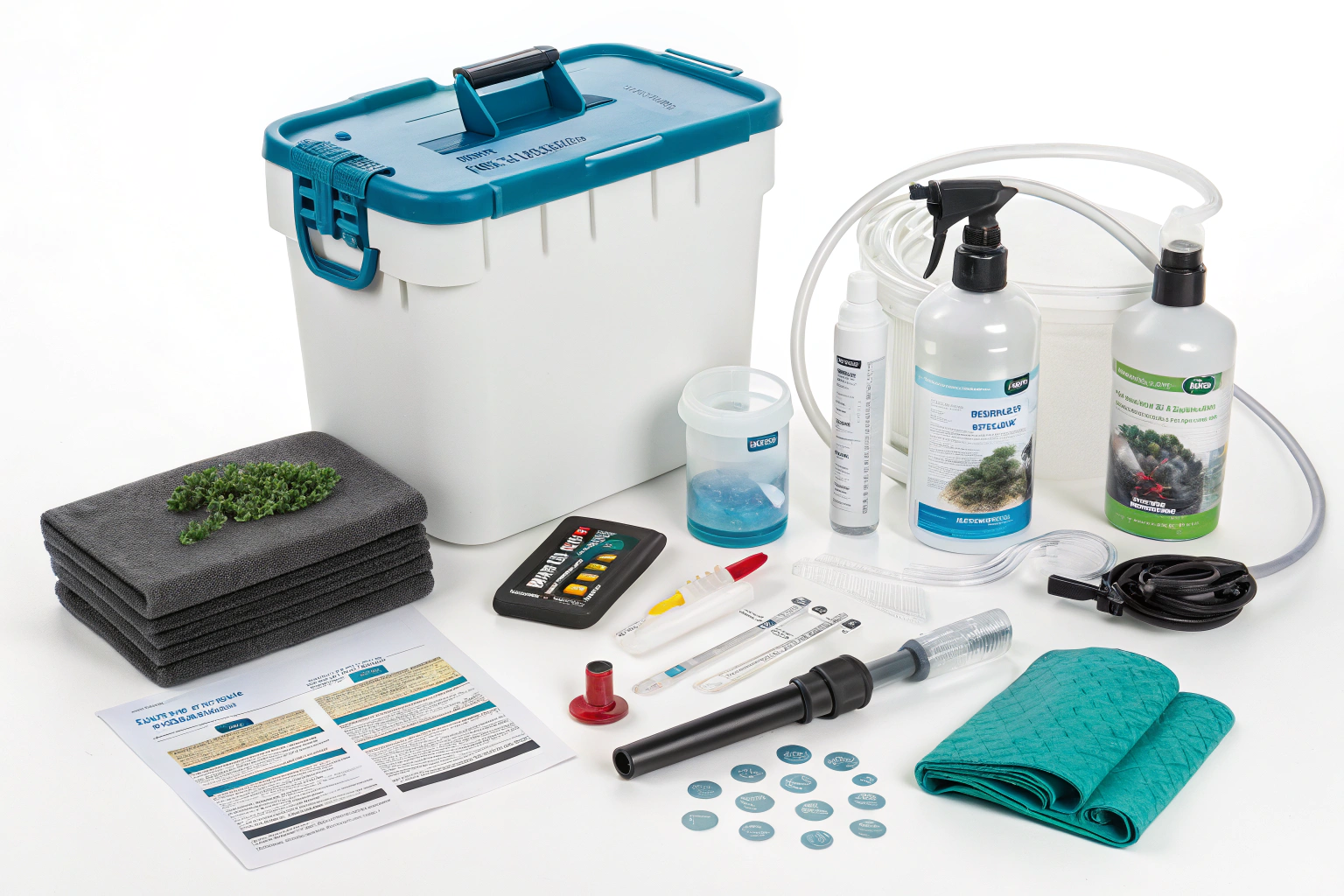
Essential Equipment for Oscar Tank Maintenance
Filtration Systems
Oscars require robust filtration rated at 6-10 times the tank volume. Recommended systems include:
- Canister filters from Fluval or Eheim
- Wet/dry filters for maximum biological capacity
- Dual filtration systems for redundancy
Cleaning Equipment
Water Change Equipment:
- Python No Spill Clean and Fill system
- Quality gravel vacuum with appropriate tube diameter
- Water conditioner (dechlorinator) for tap water treatment
Testing Equipment:
- Master test kit from API
- Digital thermometer for accuracy
- TDS meter for total dissolved solids monitoring
Water Change Techniques for Oscar Tanks
Pre-Water Change Preparation
- Turn off equipment (heaters, filters, powerheads)
- Test current water parameters for baseline
- Prepare new water with appropriate temperature and conditioner
- Remove decorations if deep cleaning is required
Proper Water Change Procedure
Temperature Matching: New water should be within 2°F of tank water Gradual Addition: Add new water slowly to prevent temperature shock Equipment Restart: Turn equipment back on after water change completion Parameter Verification: Test water 1-2 hours after change
Water Change Volume Guidelines
- Normal conditions: 25-30% weekly
- High bioload: 30-40% weekly
- Illness/medication: 50% daily as needed
- New tank cycling: 25% every 2-3 days
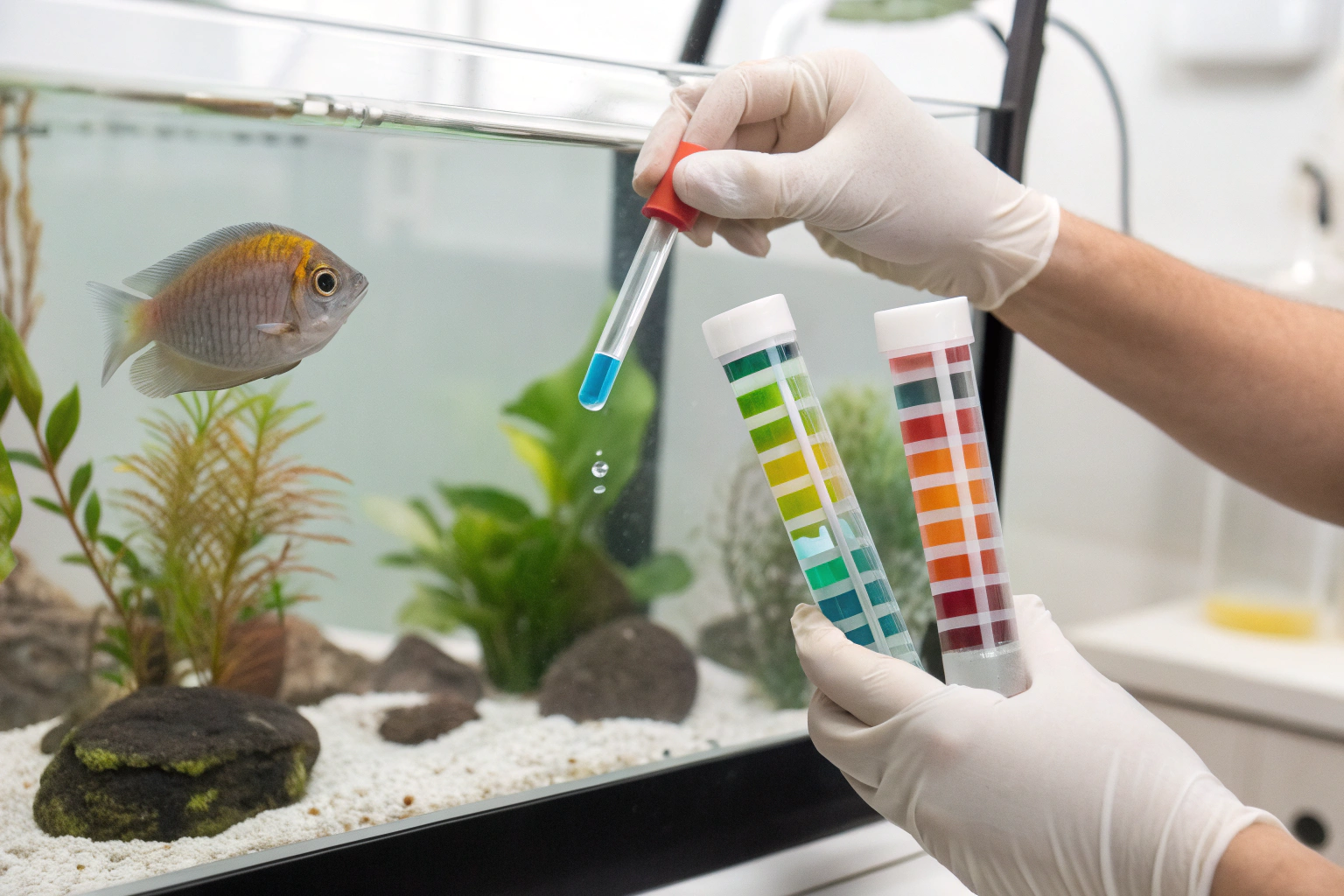
Signs Your Oscar Tank Needs More Frequent Cleaning
Water Quality Indicators
- Ammonia readings above 0 ppm
- Nitrite levels above 0 ppm
- Nitrate accumulation over 40 ppm
- pH swings greater than 0.3 units daily
- Cloudy or discolored water
Fish Behavior Changes
- Increased surface breathing or gasping
- Reduced appetite or feeding response
- Lethargy or bottom-sitting behavior
- Stress coloration or fading
- Increased aggression or territorial behavior
Physical Tank Conditions
- Visible debris accumulation
- Strong fishy or ammonia odors
- Algae overgrowth on surfaces
- Clogged or reduced filter flow
- Temperature fluctuations
Advanced Maintenance Strategies
Automated Systems
Automatic Water Changers: Systems like the Aqueon Aquarium Water Changer can simplify maintenance routines.
Monitoring Systems: Digital monitoring equipment can track parameters continuously and alert you to problems.
Biological Enhancement
Beneficial Bacteria: Products from Seachem or API can boost biological filtration capacity.
Live Plants: Hardy species like Anubias or Java Fern can help process waste products naturally.
Seasonal Maintenance Adjustments
Summer Months
- Increased cleaning frequency due to higher temperatures
- Enhanced aeration to maintain oxygen levels
- More frequent water testing due to accelerated biological processes
Winter Months
- Standard maintenance schedule usually sufficient
- Monitor heater performance closely
- Reduced feeding may decrease waste production
Common Mistakes in Oscar Tank Maintenance
Over-Cleaning
- Disturbing beneficial bacteria colonies
- Removing too much water too frequently
- Excessive substrate disruption
Under-Cleaning
- Allowing nitrate accumulation
- Neglecting filter maintenance
- Insufficient water change volumes
Improper Techniques
- Temperature shocking fish during water changes
- Using unsuitable cleaning products
- Disturbing established biological cycles
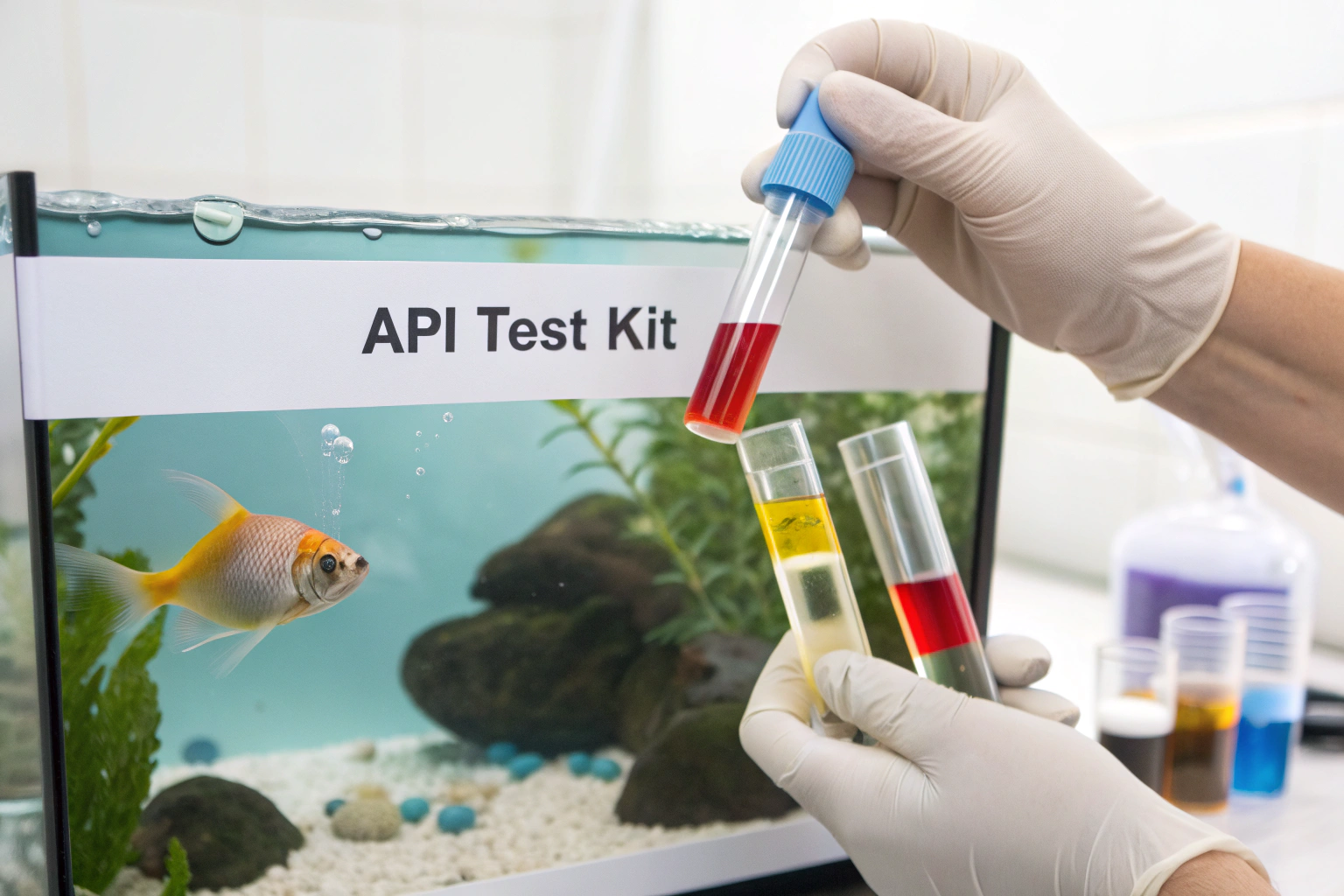
Health Benefits of Proper Cleaning Schedule
Disease Prevention
Regular maintenance prevents common Oscar ailments:
- Hole-in-the-Head Disease (HITH)
- Bacterial infections
- Parasitic infestations
- Stress-related disorders
Growth and Development
Proper water quality supports:
- Optimal growth rates
- Vibrant coloration
- Strong immune system function
- Natural behavioral patterns
Longevity Enhancement
Well-maintained Oscars can live 12-15 years, significantly longer than those in poorly maintained systems.
Emergency Cleaning Protocols
When to Perform Emergency Cleaning
- Ammonia or nitrite spike detection
- Disease outbreak in tank
- Power failure lasting over 24 hours
- Accidental overfeeding incidents
- Death of tank inhabitants
Emergency Cleaning Steps
- Immediate 50% water change
- Remove all debris and uneaten food
- Increase aeration dramatically
- Add beneficial bacteria supplement
- Monitor parameters hourly
- Prepare for additional water changes
Professional Maintenance Services
For aquarists unable to maintain proper cleaning schedules, professional services are available through:
- Local fish stores offering maintenance contracts
- Certified aquarium maintenance technicians
- Aquascaping professionals from Aquatic Plant Central
Cost-Effective Maintenance Solutions
Budget-Friendly Equipment
- DIY water change systems using food-grade tubing
- Homemade filter media using appropriate materials
- Bulk water conditioner purchases for cost savings
Preventive Measures
- Proper feeding techniques to reduce waste
- Quarantine protocols for new additions
- Regular equipment maintenance to prevent failures
Monitoring and Record Keeping
Maintenance Logs
Keep detailed records of:
- Water change dates and volumes
- Parameter test results
- Equipment maintenance schedules
- Fish health observations
- Feeding schedules and amounts
Digital Tools
Apps and software for aquarium management can help track maintenance schedules and parameter trends.
Conclusion
The frequency of Oscar fish tank cleaning depends on multiple factors including tank size, bioload, filtration capacity, and feeding habits. However, the general rule for healthy Oscar maintenance is weekly water changes of 25-30%, combined with regular substrate cleaning and equipment maintenance.
Remember that consistency is key to successful Oscar keeping. A well-maintained cleaning schedule not only ensures your Oscar’s health and longevity but also provides you with a beautiful, thriving aquatic display that can be enjoyed for many years.
For additional guidance on Oscar care and aquarium maintenance, consult with experienced aquarists through communities like FishLore or seek advice from aquatic professionals at the Association of Aquatic Veterinarians.
By following the maintenance schedule outlined in this guide and adapting it to your specific tank conditions, you’ll provide your Oscar fish with the clean, healthy environment they need to thrive. Remember: a clean tank is a happy tank, and happy Oscars are active, colorful, and interactive companions that bring joy to dedicated aquarists.
For more comprehensive aquarium care guides and expert maintenance tips, connect with the broader fishkeeping community and stay updated on the latest aquarium care techniques and technologies.
